By Liza D., of Better Dresses Vintage .
Proud VFG Member!
I recently purchased this lovely Edwardian hand-embroidered linen reticule on etsy. The friendly owner told me it had belonged to her grandmother.
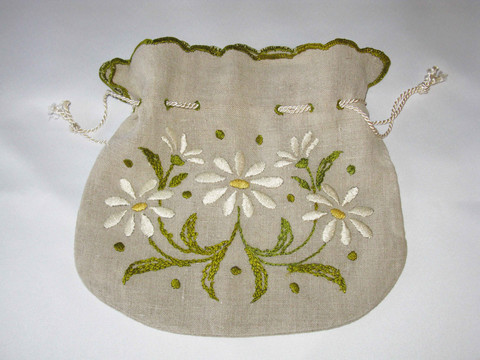
It was in perfect condition, but unlined:
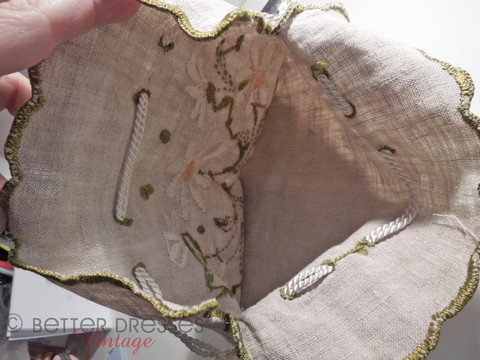
As with all the original items I buy, I mean to use them. And although linen is strong and sturdy, I was worried about damaging the bag. Something could poke through, snag, or stain it. I’d hate for this sweet little purse to survive 100 years, only to be ruined by me.
So I went to the local quilt shop to buy a fat quarter of coordinating fabric in a natural fiber. Here’s the cotton I chose:
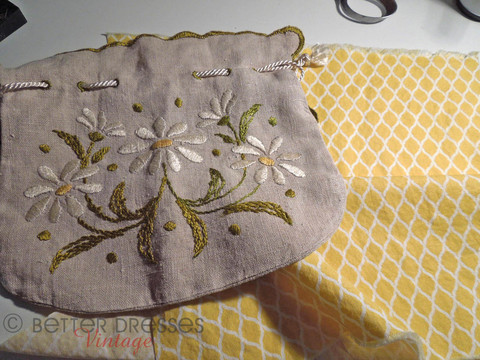
Have I mentioned that I am not the world’s most confident seamstress? Nor the most patient? But I was determined to do a fine job and most important to “first, do no harm.” Bet you didn’t know that oath also applies to vintage. But yes, it certainly does!
To avoid changing the look of the bag and maintain the lovely drape of the scalloped top edge, I planned to only line the interior below the drawstring. Bonus/Full Disclosure: it would be a whole lot easier than trying to create a full lining.
I turned the reticule inside out, tucked everything above the drawstring out of the way, lay it on top of the folded fat quarter, and traced around the bag using tailor’s chalk. I then cut out the shape, leaving a bit extra for seam allowance.
After machine-sewing the lining together, I snipped into the curves to help it conform to the shape of the bag. Then I folded the top edge down, checking that it would fit properly. Here’s how it looked before I ironed it:
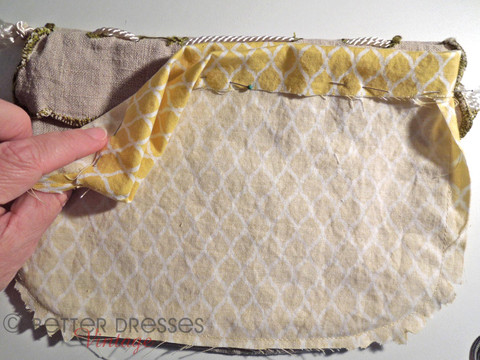
After pressing, I turned the raw edge under and pressed it again. Not sure why. Just seemed like a good idea (neatness counts):
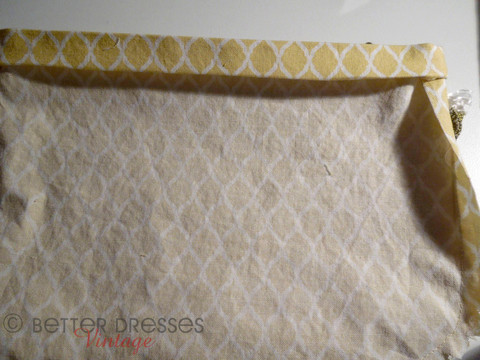
Next, I turned both pieces right-side-out, and pinned the lining in place:
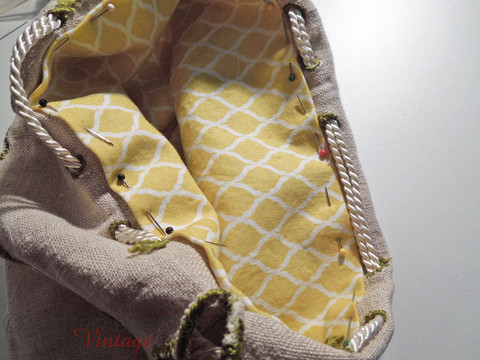
Then, I tried my very best to make teeny, tiny, even hand stitches. And here is the result:
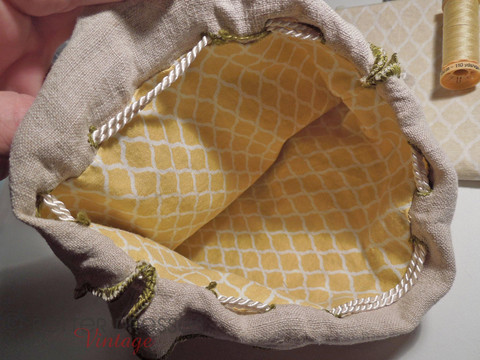
And how the row of stitches looks from the outside:
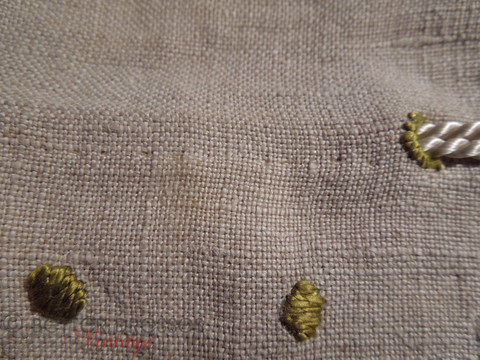
And the completed project:
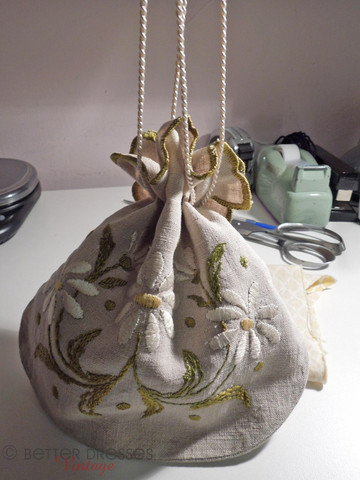
I’m pleased with the results. A lined reticule with no damage done. I don’t know yet if the lining will actually cause more strain on the linen, by concentrating the weight of the contents along that single row of tiny stitches. If so, I’ll add another row. And if I need be, I’ll remove it completely.
- Full disclosure: I’ve just been informed by a knowledgeable colleague that the bag did not start out life as a reticule. Rather, it was a lingerie storage bag for the tiniest of dainties. Nonetheless, it’s officially a reticule now.